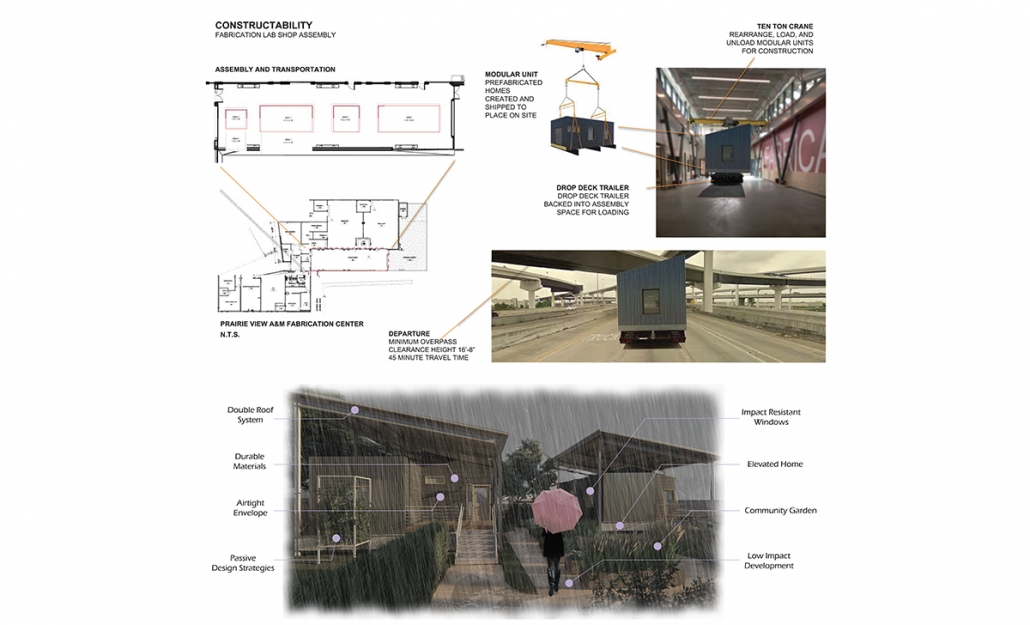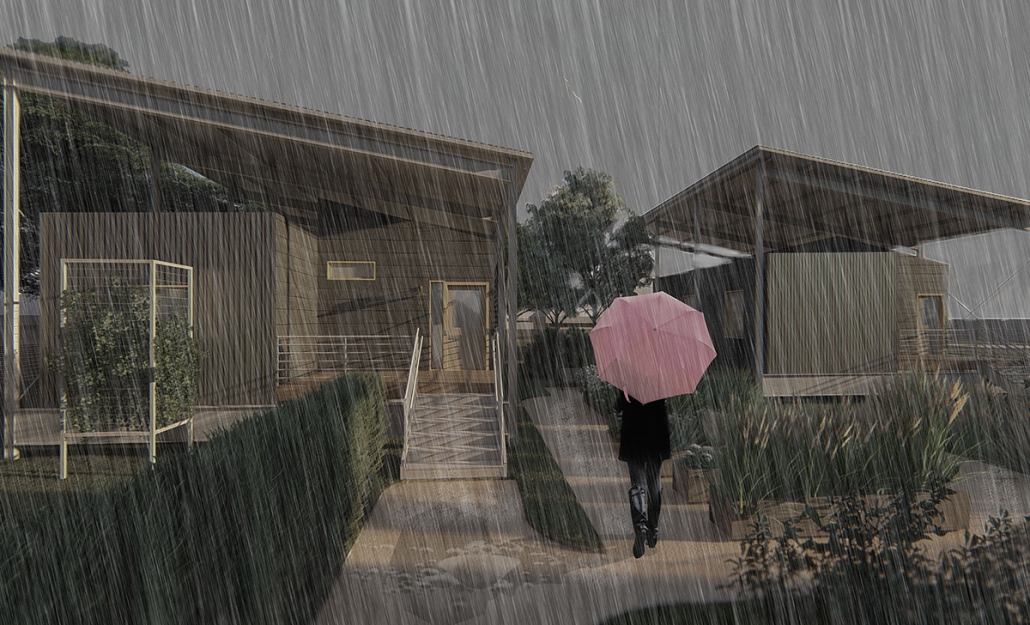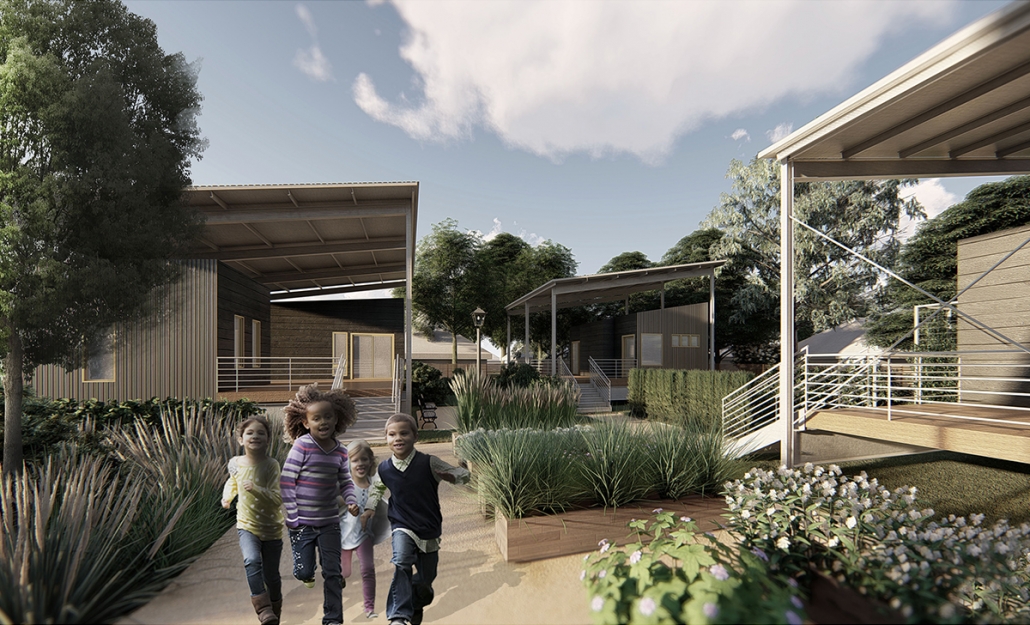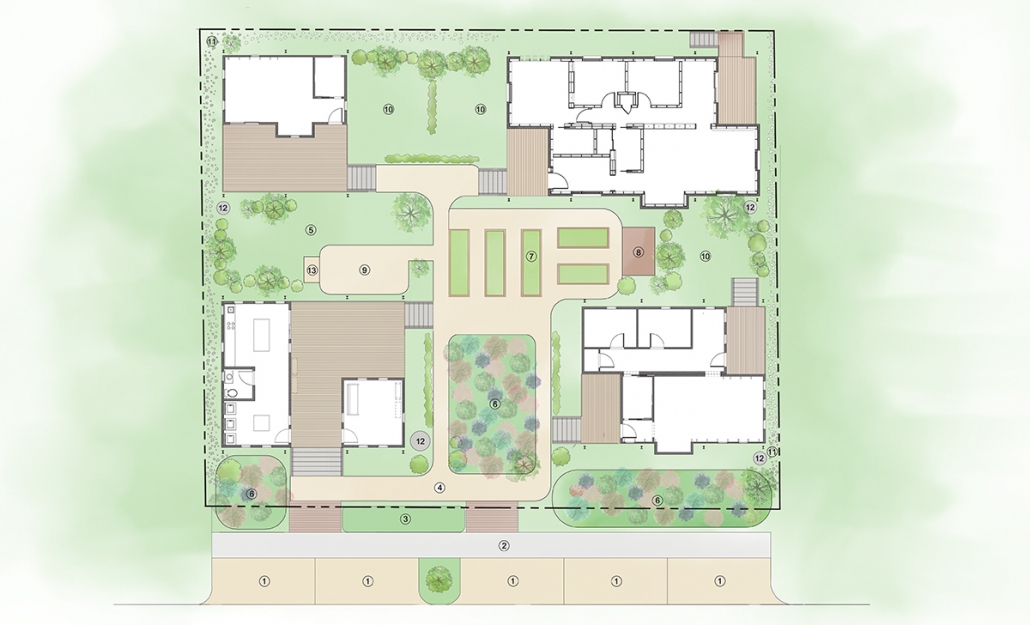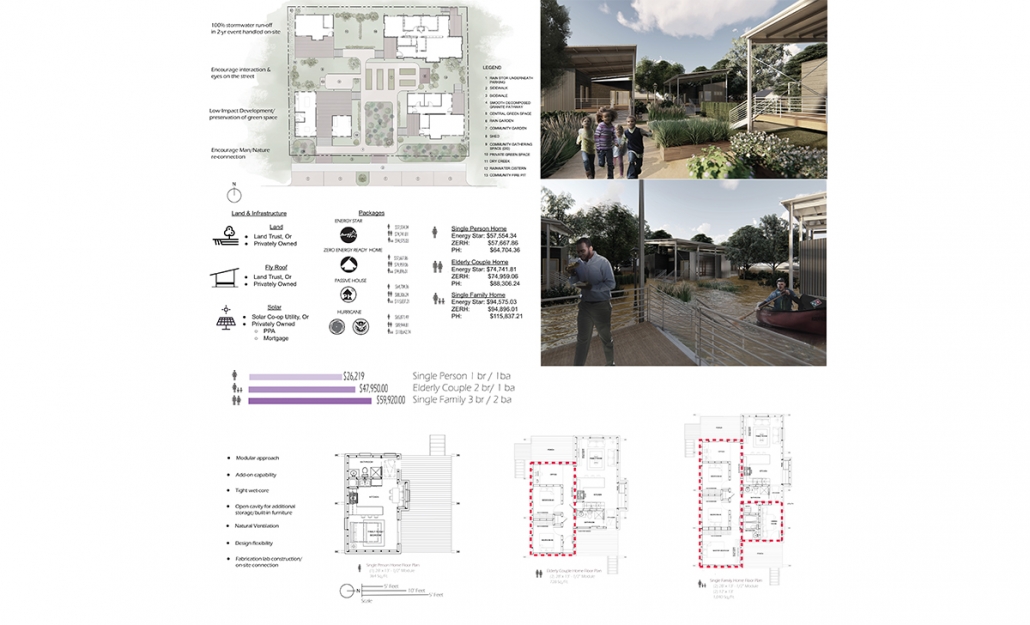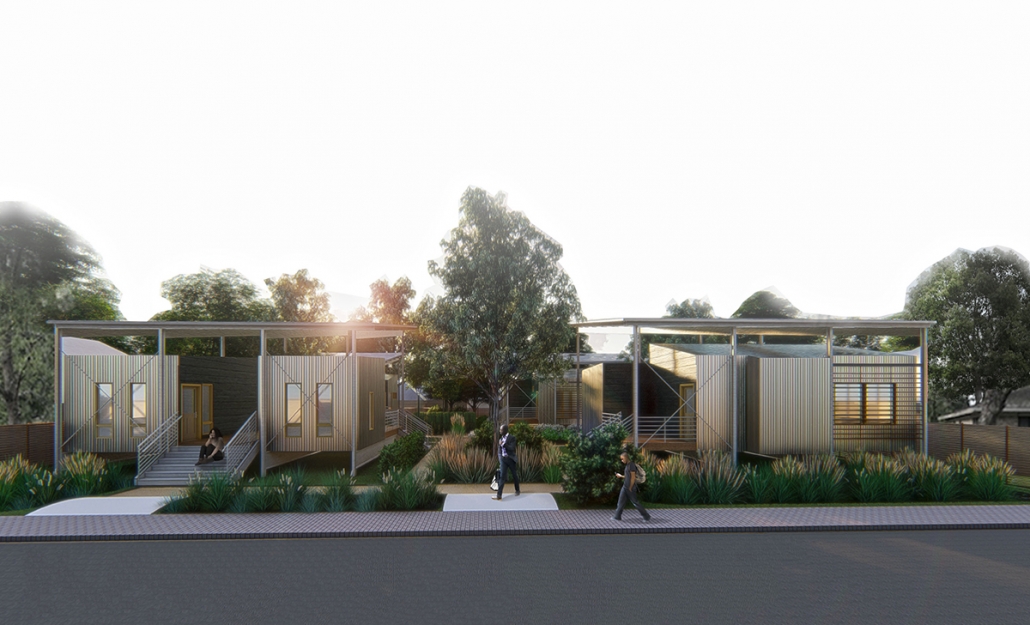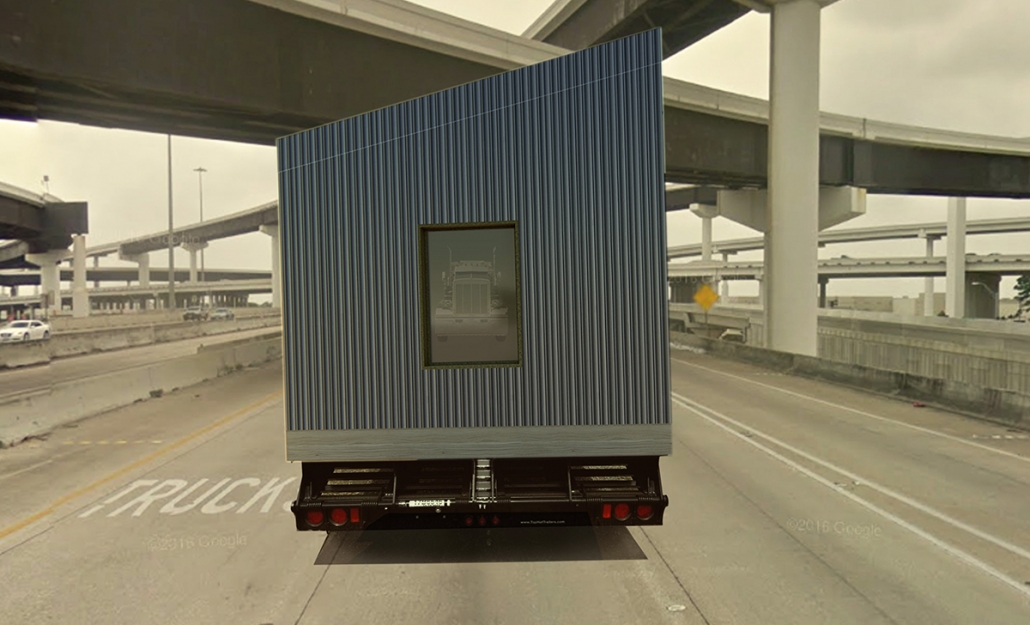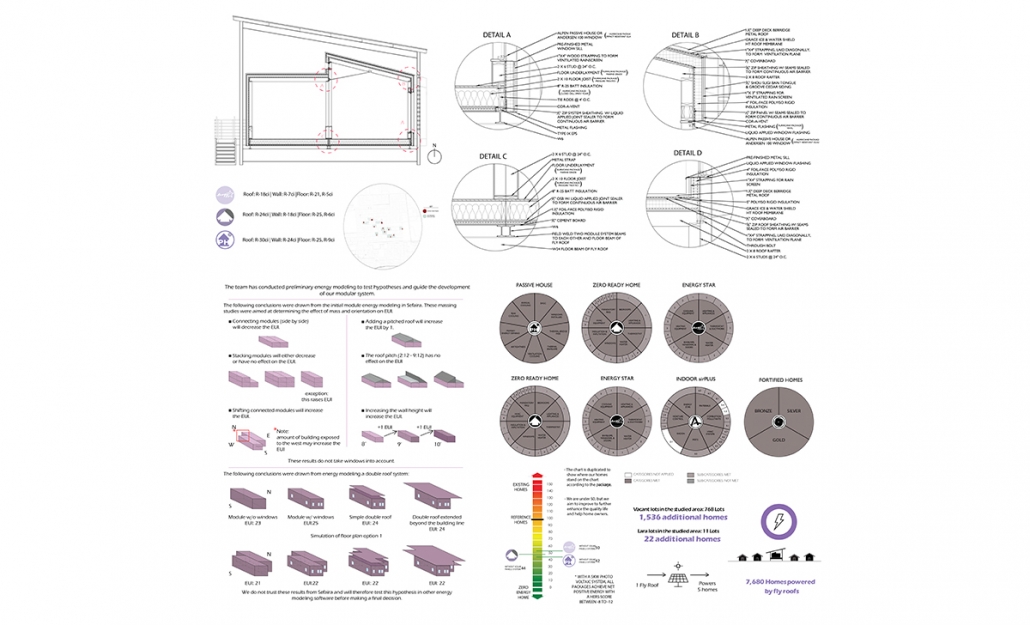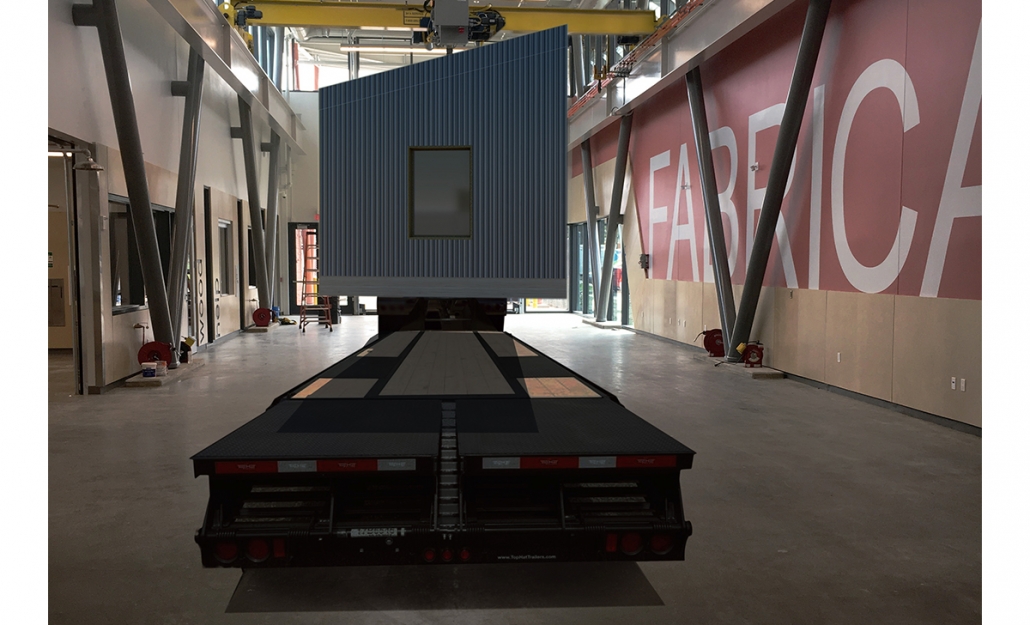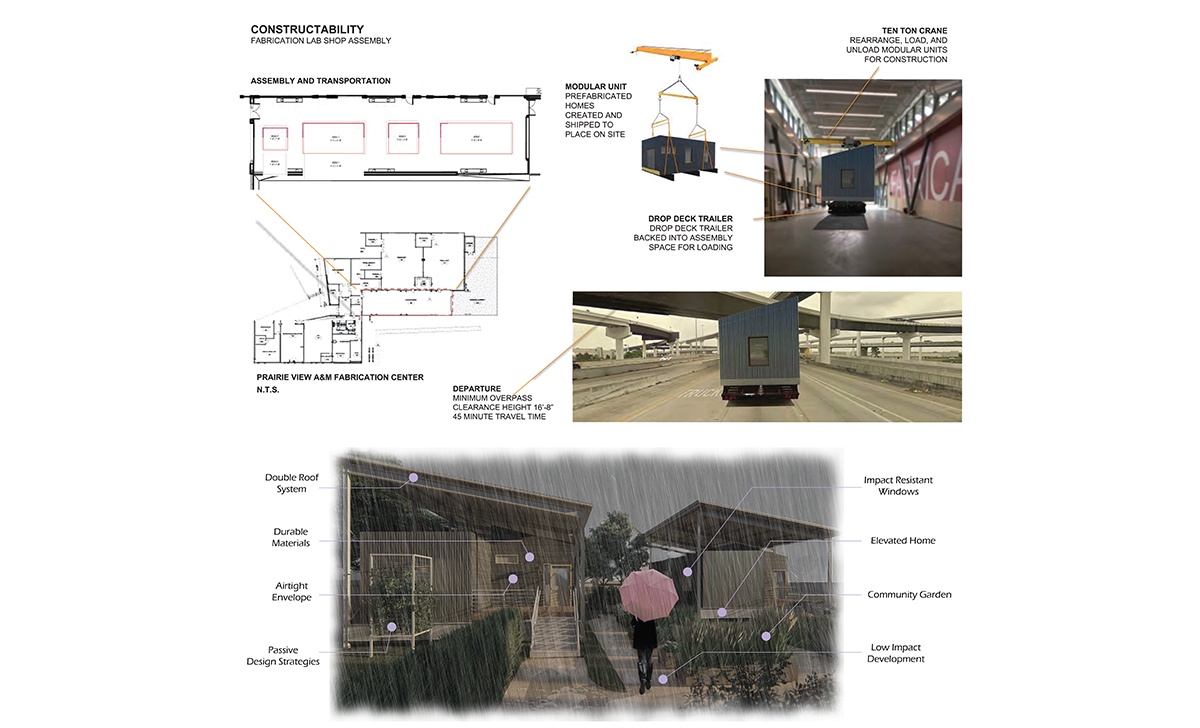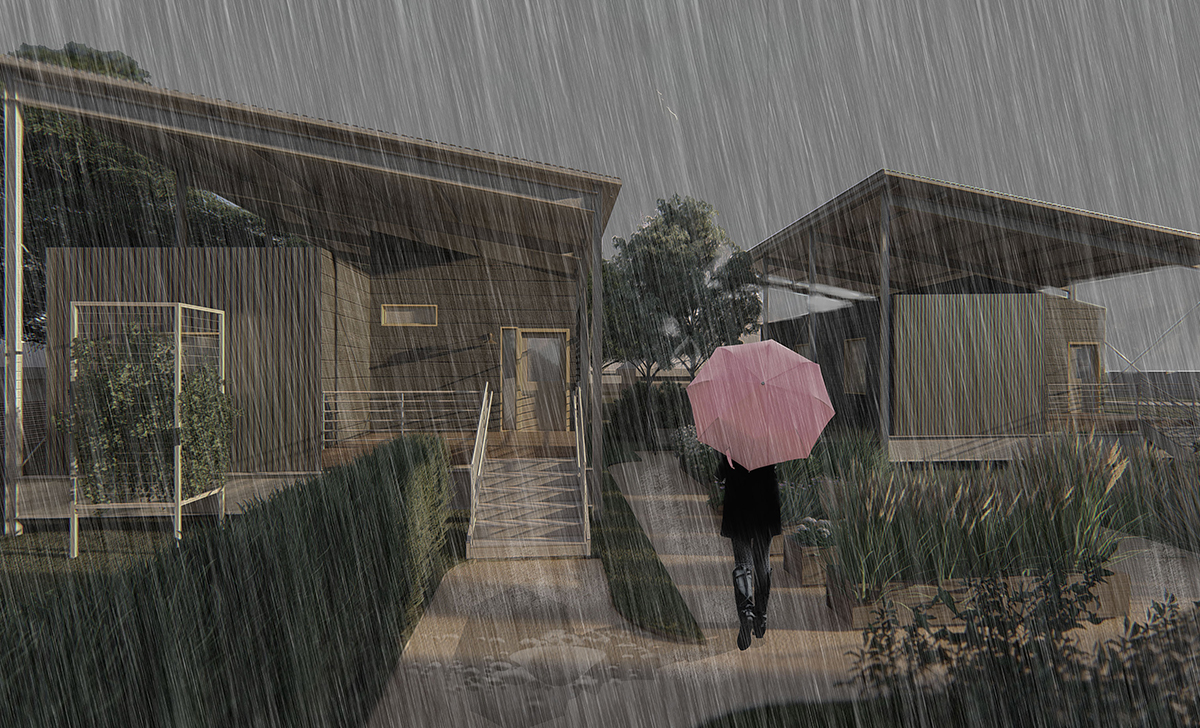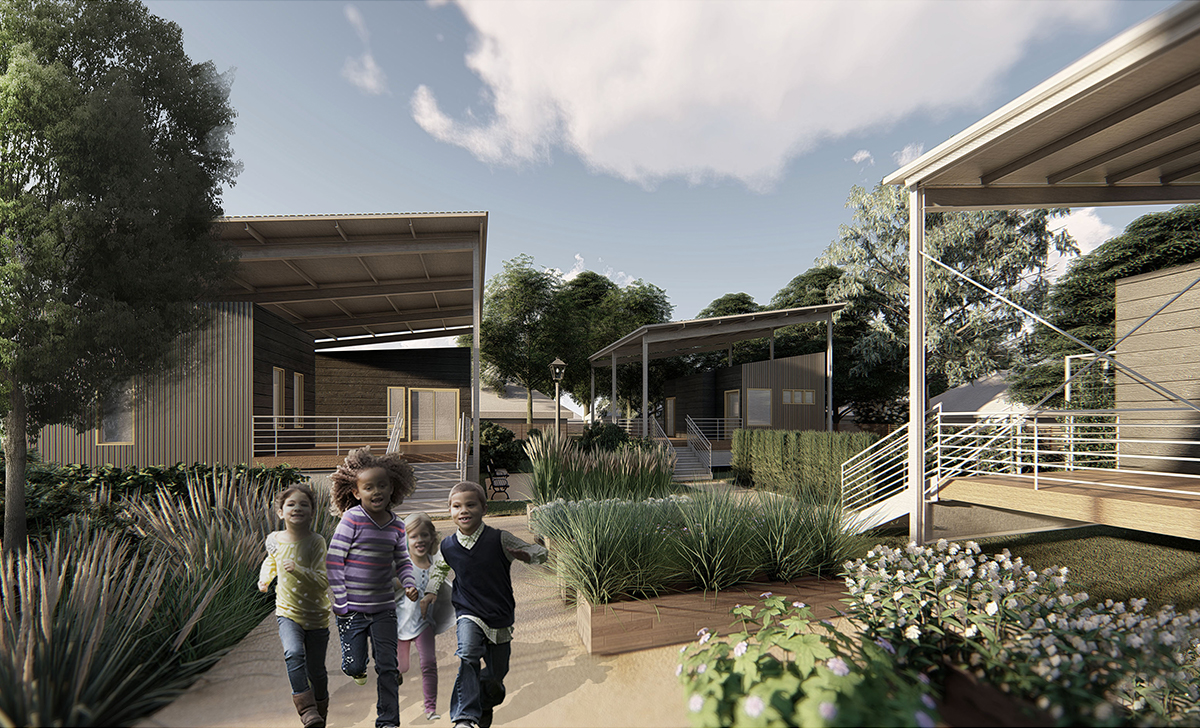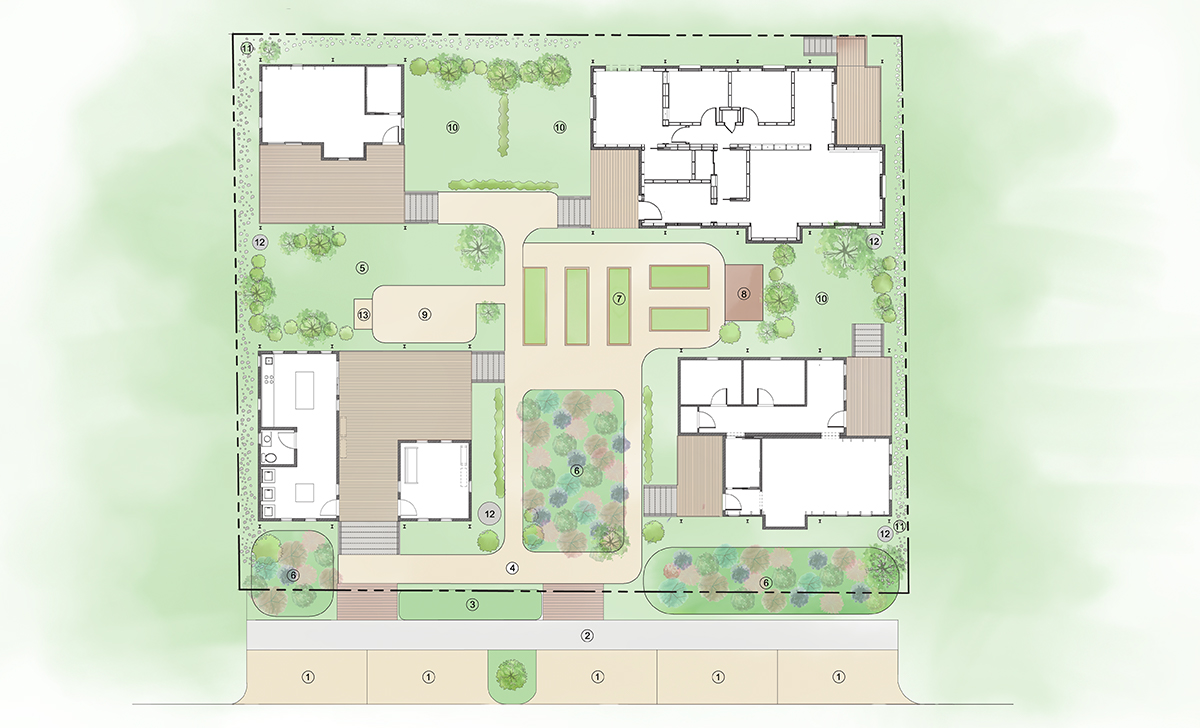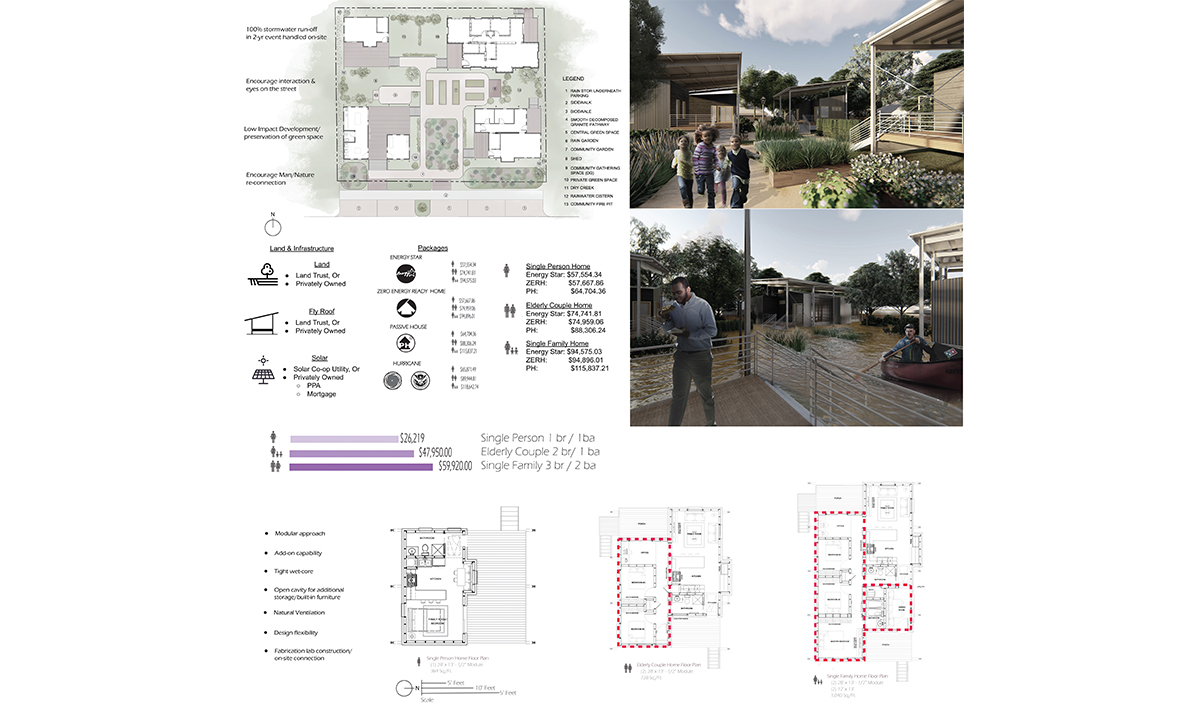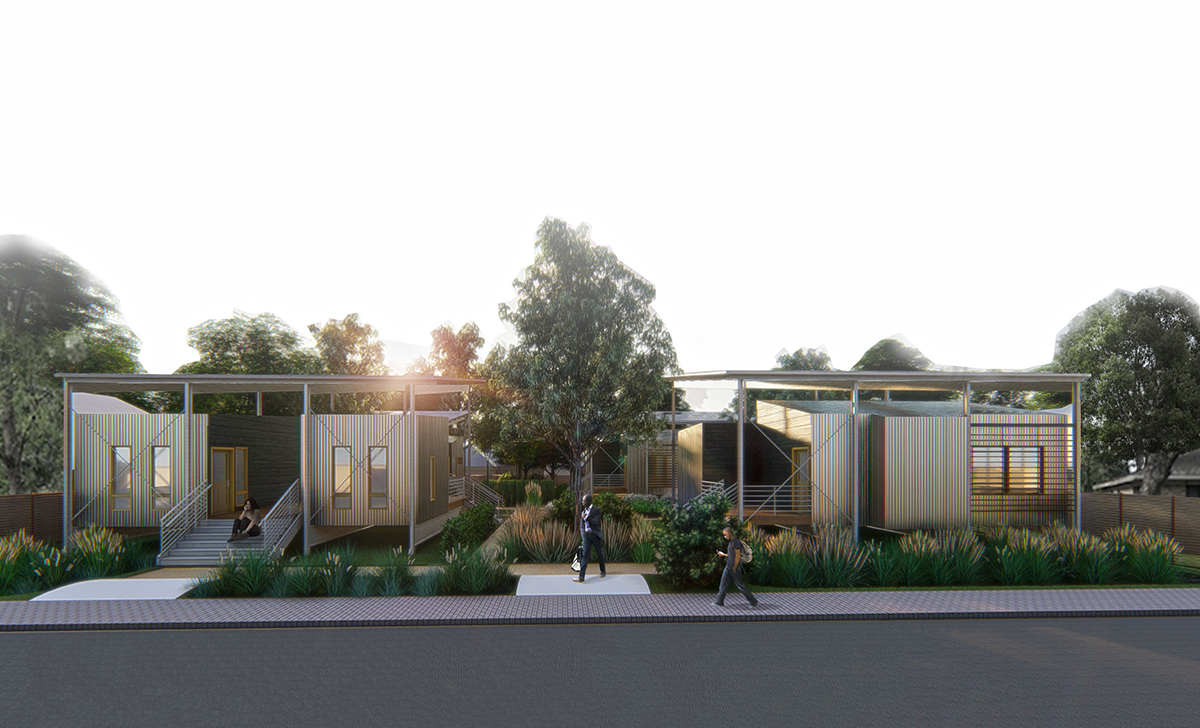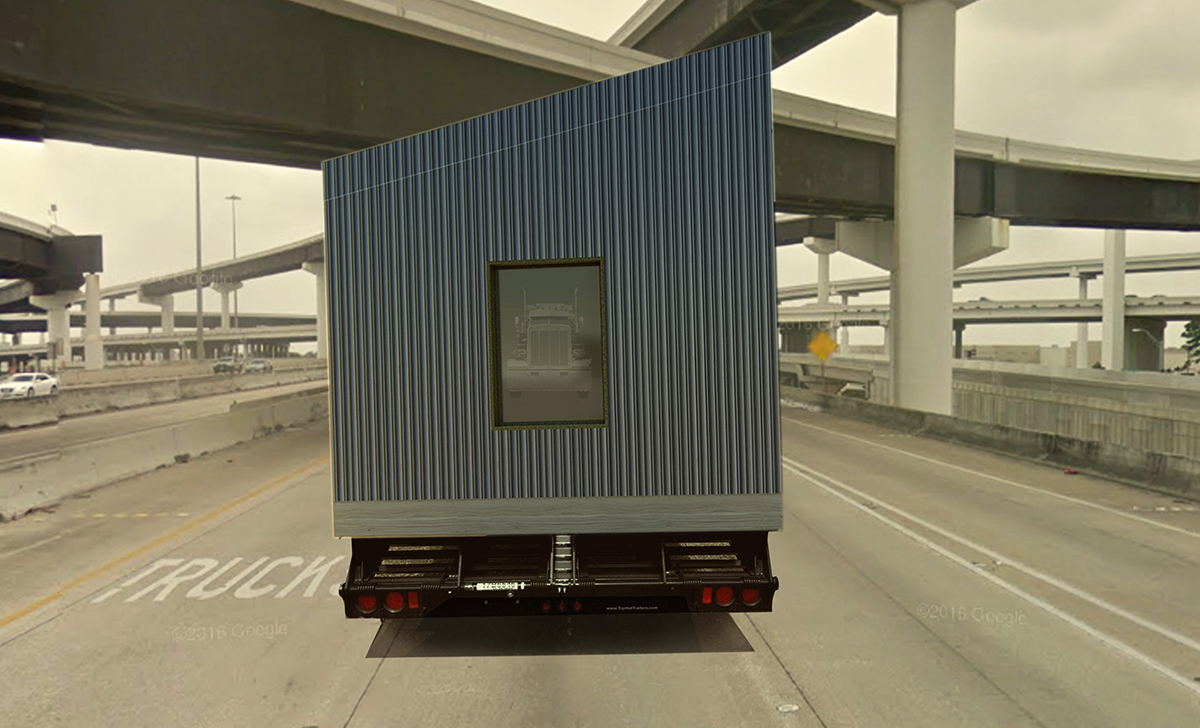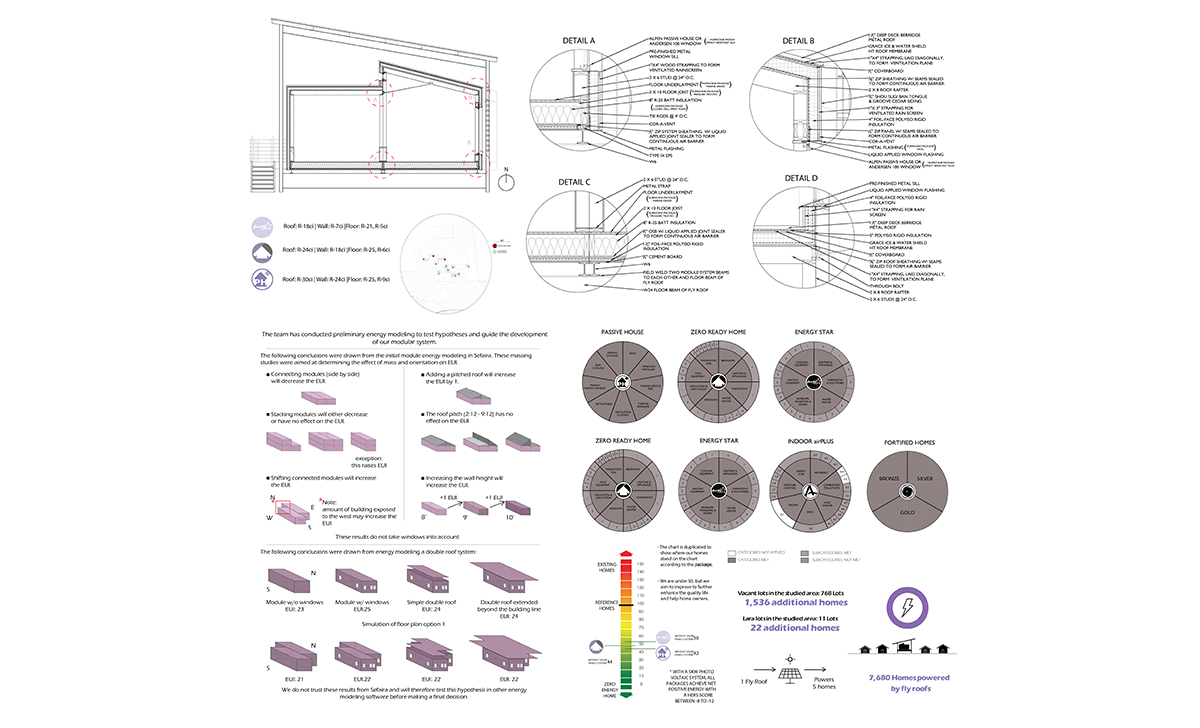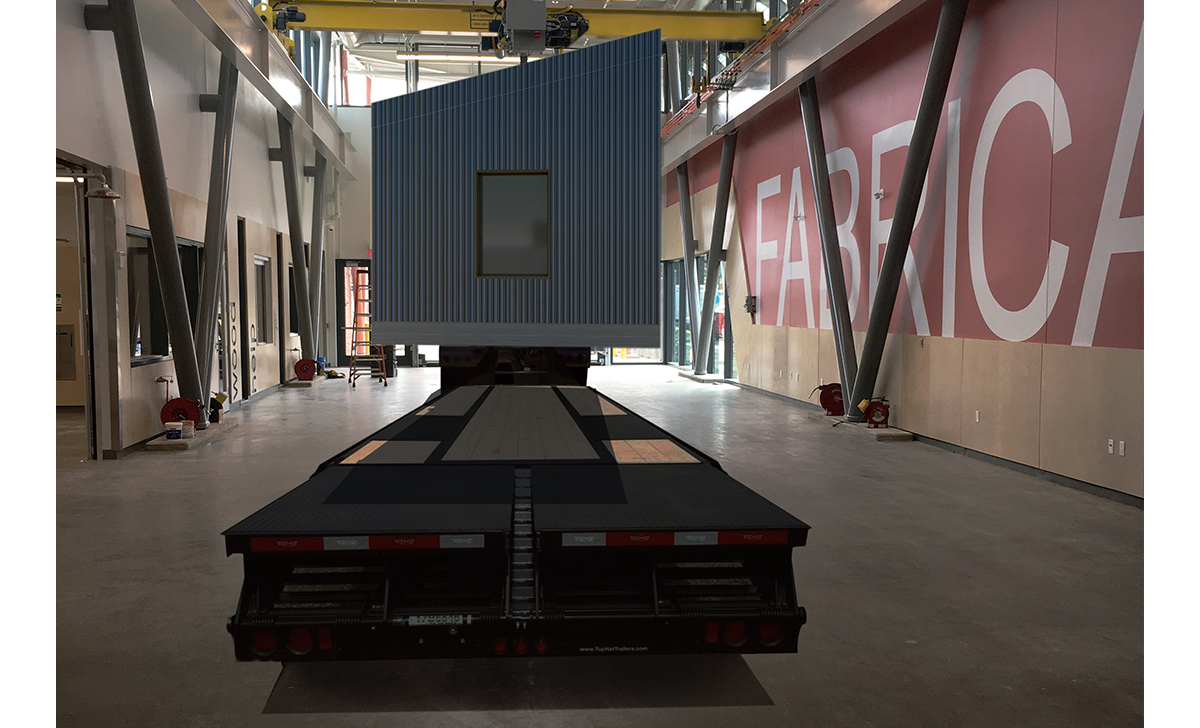2018-2019 COTE Top Ten Winners
Winner: The Fly Flat
Cynthia Suarez-Harris, Ledell Thomas, & Kennia Lopez
Juror Comments
Fly Flat is a hopeful project which transforms modular design into art. The impeccable renderings explore vernacular housing in an innovative way while creating affordable and sustainable residential design. This proposal demonstrates thorough research and discovery of new concepts in working towards meeting its primary goal of how to address climate change in low-income communities.
Project Description
This 4th year undergraduate design studio utilized Public Interest Design within a regenerative framework to help realize the potential of Independence Heights, a historically black, low-income neighborhood in Houston, Texas. Regenerative design is here defined as a process via which we become a co-evolutionary partner with nature in order to work on developing the capability of living systems, social as well as natural, to express their potential for diversity, complexity, and creativity. Students were required to interact with the residents of the neighborhood as part of extensive research on the community, its history, and people in order to catalyze the realization of the neighborhood’s potential.
Independence Heights was the first incorporated black municipality in Texas (1915). The neighborhood was subsequently incorporated into the City of Houston, where over time it has faced the pressures of desegregation, redlining, freeway construction, aging infrastructure, flooding and gentrification. Most recently, the Independence Heights neighborhood sustained significant damage from Hurricane Harvey in August of 2017. Repeated floods have left the single family neighborhood significantly vacant and in need of resilient housing.
This project sought to address the need for infill housing while achieving environmental, economic and social resilience. Working with our community partners, our team designed an infill pocket neighborhood with community solar that will be owned by a land trust, while the homes will be privately owned. Through modular design and various energy performance packages, this project delivers net zero homes that meet Houston’s 50% – 80% Area Median Income. We employed sound building science, energy modeling, and FEMA 499 strategies to achieve energy efficient, durable, healthy, and storm resilient home.
The team began by developing modular units that could be constructed by students in our Fabrication Lab. The dimensions and building envelope assemblies for various size units were set based on transportation constraints in combination with early energy modeling utilizing both Sefaira and BeOpt modeling software to affordably meet the comfort challenges of Houston’s hot and humid climate (2A). We then designed the modular units so that they could be combined into various dwelling unit sizes and configurations that meet various social and economic scenarios.
We were tasked with designing a pocket community on a double lot that is part of the Houston Land Bank program, with the goal of building social resilience. The community consists of shared resources including a community building plus three homes: a 300 square foot studio home for a single person; a 730 square foot two bedroom, one bath home for an elderly couple; and a 1,020 square foot three bedroom, two bath home for a family with kids. The homes were optimized for energy performance and durability utilizing WUFI-Passive and Remrate modeling software. Various material and performance options were cost estimated to determine the most affordable route for meeting a range of scenarios. The Fly Flat has won the Grand Prize at the DOE’s Race to Zero Competition, a Texas Society of Architects Studio Award, and a City of Houston Complete the Community Housing Design Award.

 Study Architecture
Study Architecture  ProPEL
ProPEL 
